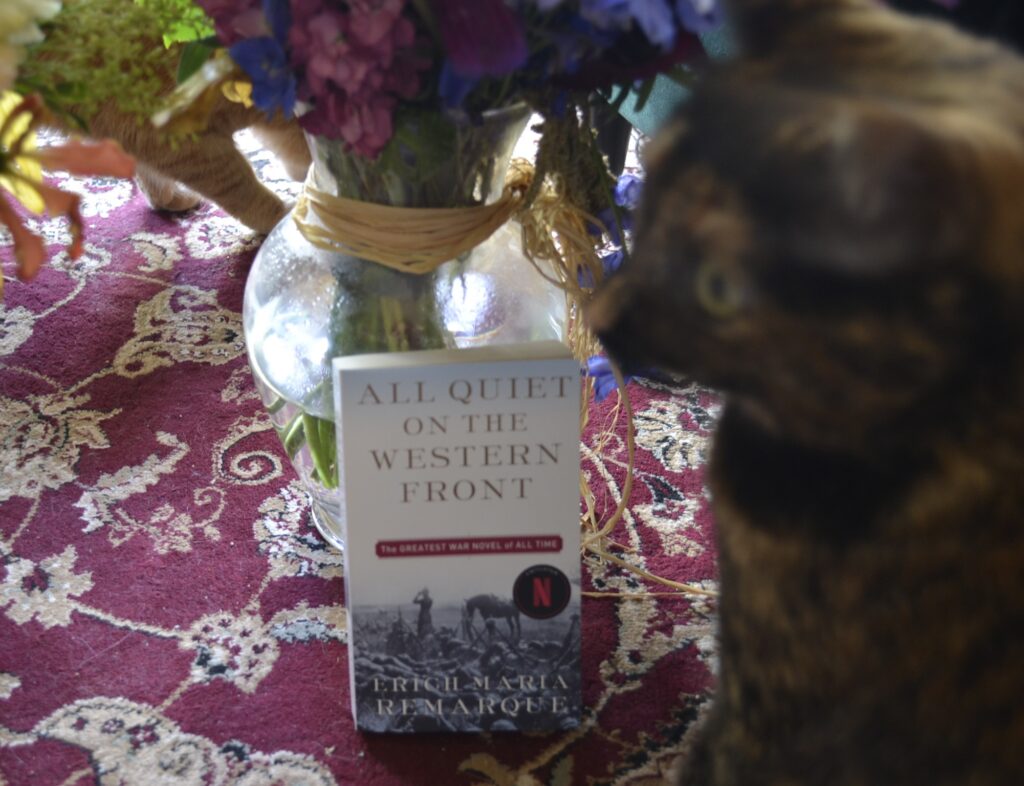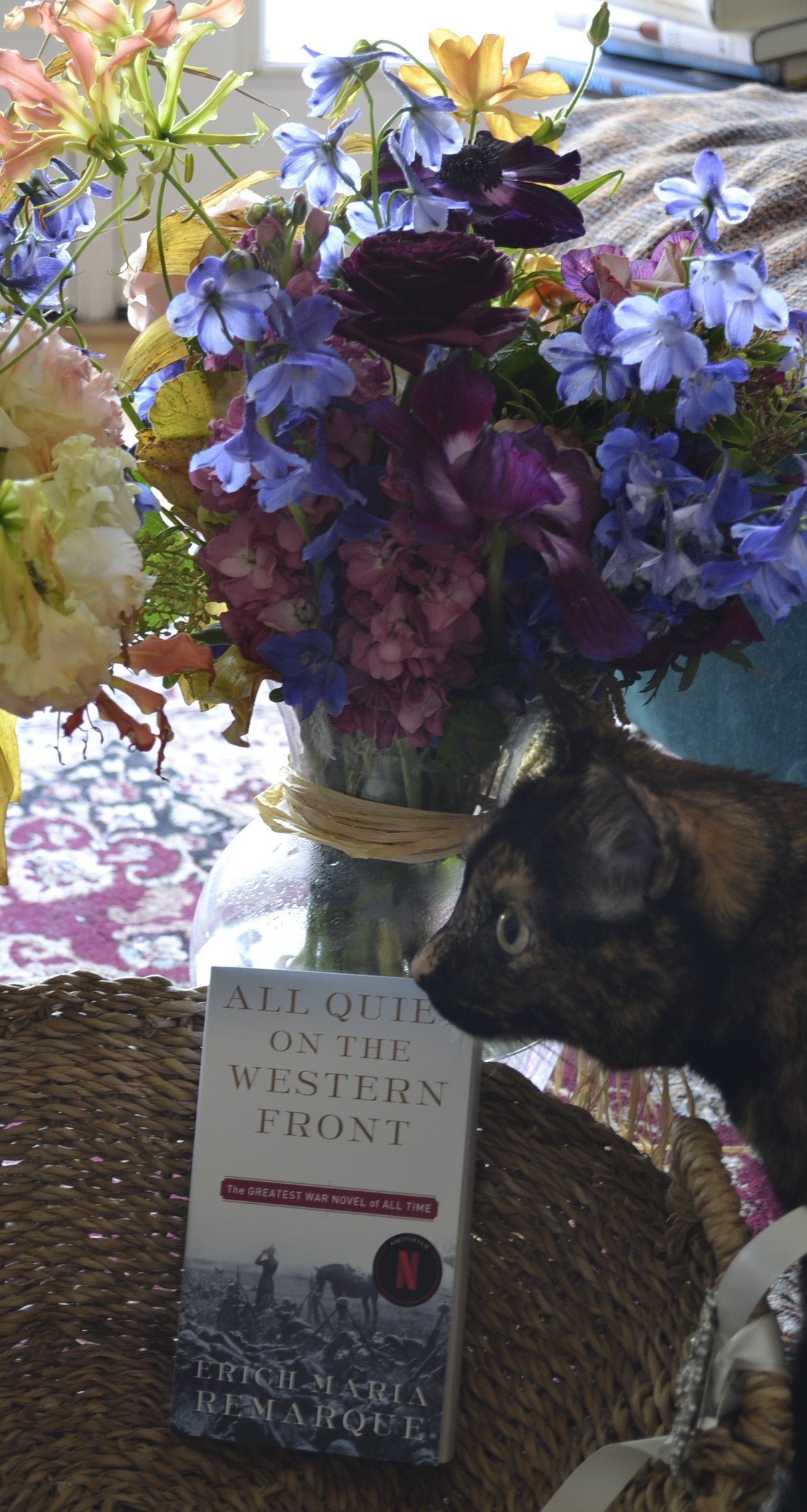The Problem with Flowers
I have seen many a post on the internet that has told me that cats and flowers do not mix. Yet I am most aware of the problem when we have a bouquet in a vase on the kitchen counter. Recently, my lovely spouse and I had a small vow renewal ceremony which featured some beautiful bouquets. When it was all over, we put the flowers in water and placed them on the kitchen counter. Jabberwocky gave them a more than cursory examination. When I was taking photos, she was perfectly content to give them a deep enough sniff to end up with a tiny nose covered in pollen. However, after that, she left them alone.
But then came meal time, when she leapt onto the counter and started to give the flowers a few threatening near bites. Yes, she is using the flowers to bully us into early meals and treats. Ridiculous. Jabbers is nothing but perpetually hungry and permanently ridiculous.
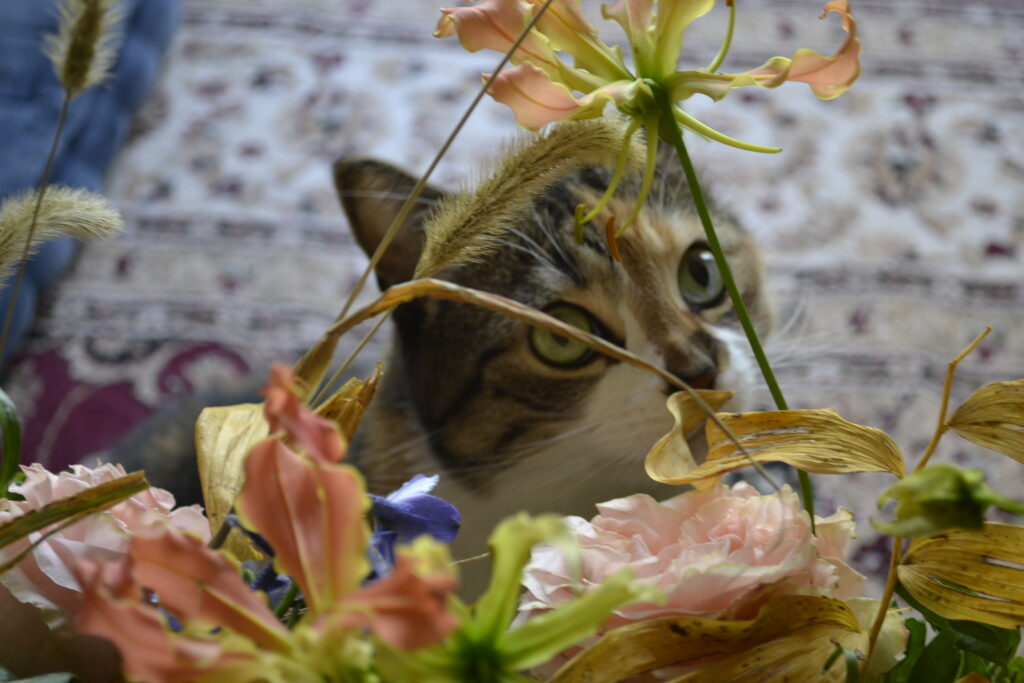
A Classic in So Many Ways
Erich Maria Remarque’s All Quiet on the Western Front (Im Westen nichts Neues) is a classic in so many ways. The novel itself is a powerful antiwar statement that has influenced so many novels after it and war literature in general. There are structures, imagery, and themes here that ripple across time and can be seen in so many other works. There are also several adaptations of the book that have won nearly equal acclaim and legendary status. Most notably there’s the 1930 film directed by Lewis Milestone (which I watched in high school history class and had a profound impact on me for decades afterward), but there’s also other films, songs, and even more than one graphic novel adaptation as well.
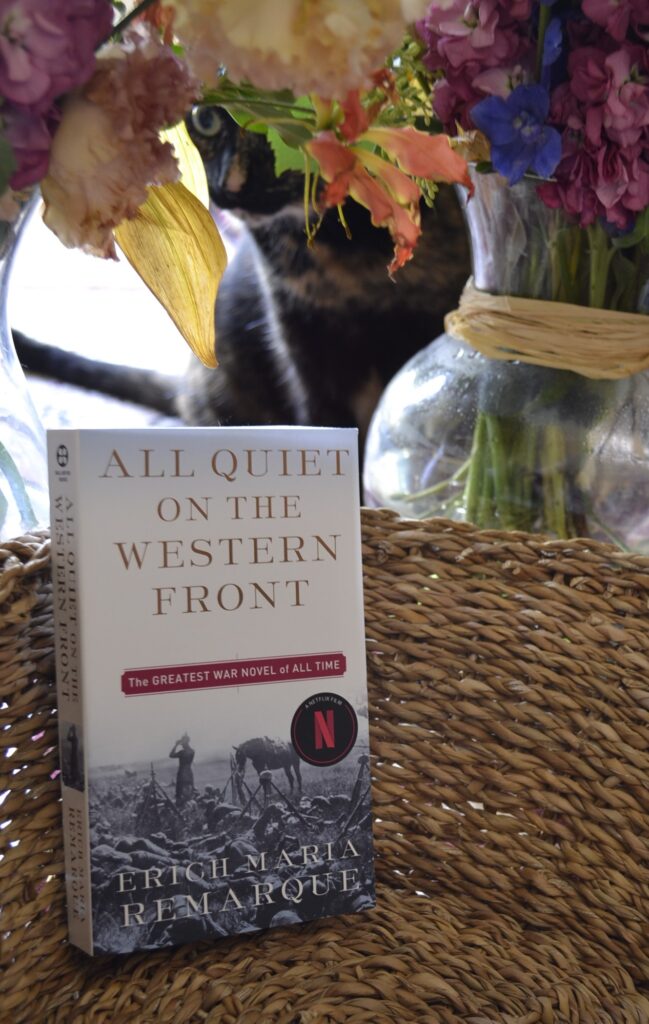
Whatever way you encounter this story, it is guaranteed to leave a lasting impact on you. Remarque himself was a German World War I veteran and used his experience to craft the story of Paul Baumer, a German soldier who enlists with several of his friends and classmates during the height of patriotic fervor, only to discover the realities of trench warfare and the massacre of human life hiding behind propaganda and the delusions of those who do not fight, elder generations, and those in power. All Quiet on the Western Front is given from the perspective of the losing side, which is still rare when it comes to war literature, especially in translation and from this era.
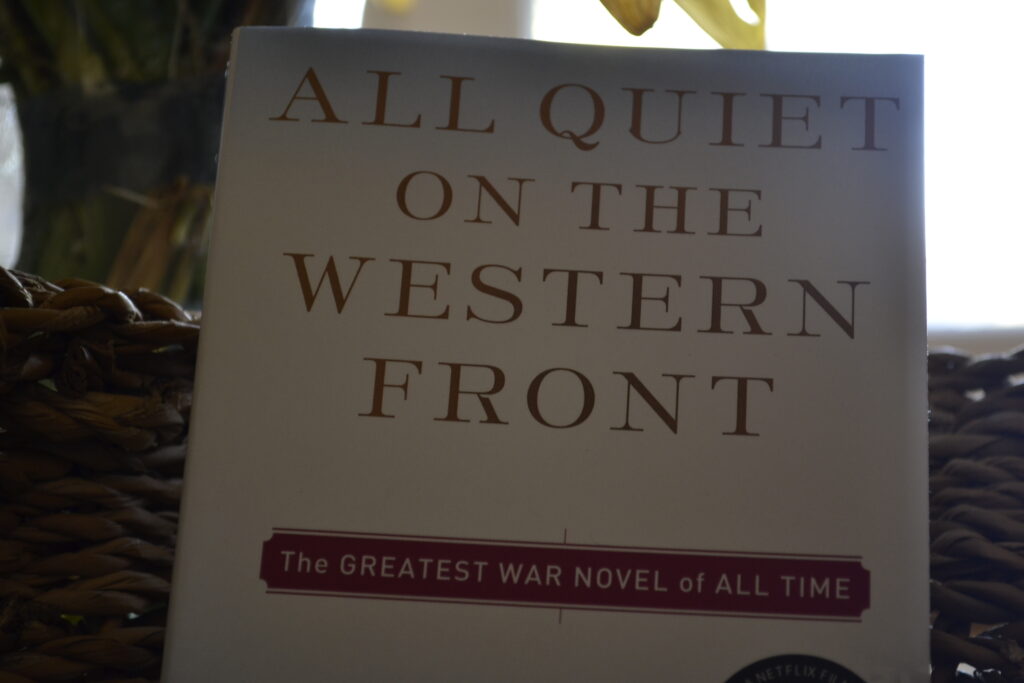
Generational Rifts
One of the most powerful and enduing aspects of All Quiet on the Western Front is Remarque’s commitment to detailing the costs of war that are not physical. He describes shellshock, the devastation of losing friends and fellow soldiers, and also the transformative aspect of trauma. These young men go to war and, when they come home, they are disconnected from the world they once knew. They are permanently changed and yet family, friends, neighbours, and acquaintances expect them to be the same. Baumer’s interactions with his mother and sister and his time on leave are some of the most powerful moments of the novel, as he realizes that he is now a man that no one knows and ultimately no one wants to acknowledge because it means acknowledging the horrific nature of war and what has been stolen from these soldiers.
Their youth is gone and yet they cannot become the adults that the past generations expect them to be. They have lost their innocence as well as their faith in the world and the continuity of it. There are voids that cannot be filled and things lost that can never be replaced. Remarque harsh description of these equally harsh realities is as moving as it is utterly and exquisitely shattering.
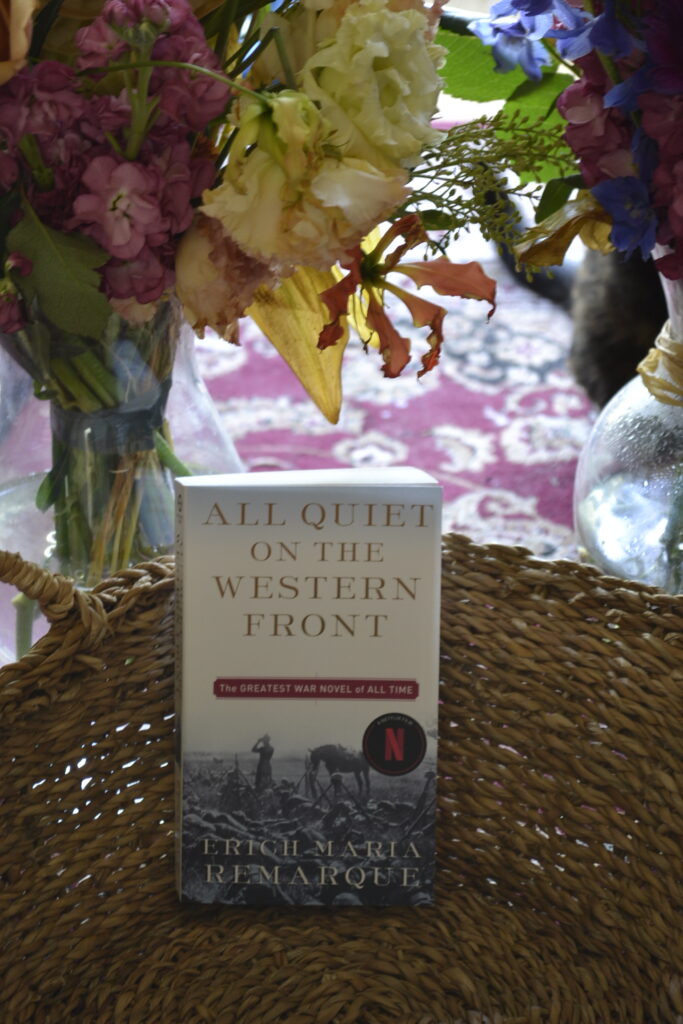
The Power in the Ending
By way of warning, there are definitely spoilers ahead.
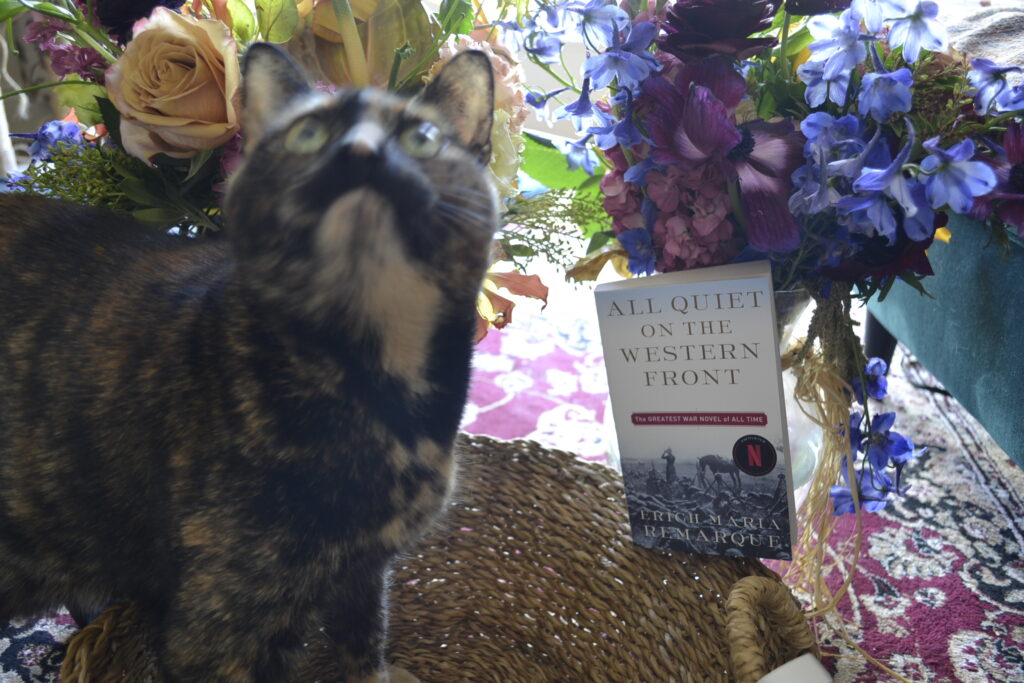
The ending of this book is one of the rare ones that brings me to tears every time. The reader watches as Baumer loses all of his comrades one by one, but through it all he has the friend he is closest to, Kat. They share stolen meals and moments when they try to forget the front and the slaughter going on all around them. The reader sees them grow and lean on each other during the worst of times, sharing laughter at the slightly less than worst of times.
Then Kat dies. Simply. Silently. In Baumer’s arms. After that, life no longer matters. After that, Baumer is ready to die and does so on a day where the fighting is relatively quelled. A day when all is quiet on the western front. His death has no meaning.
It’s so achingly sad and completely devastating to read. The prose is perfect. The structure is flawless. If you haven’t read this book, the ending and everything that has been carefully included leading up to it is worth the read all on its own. And that is just one thread in this gorgeously constructed tapestry.
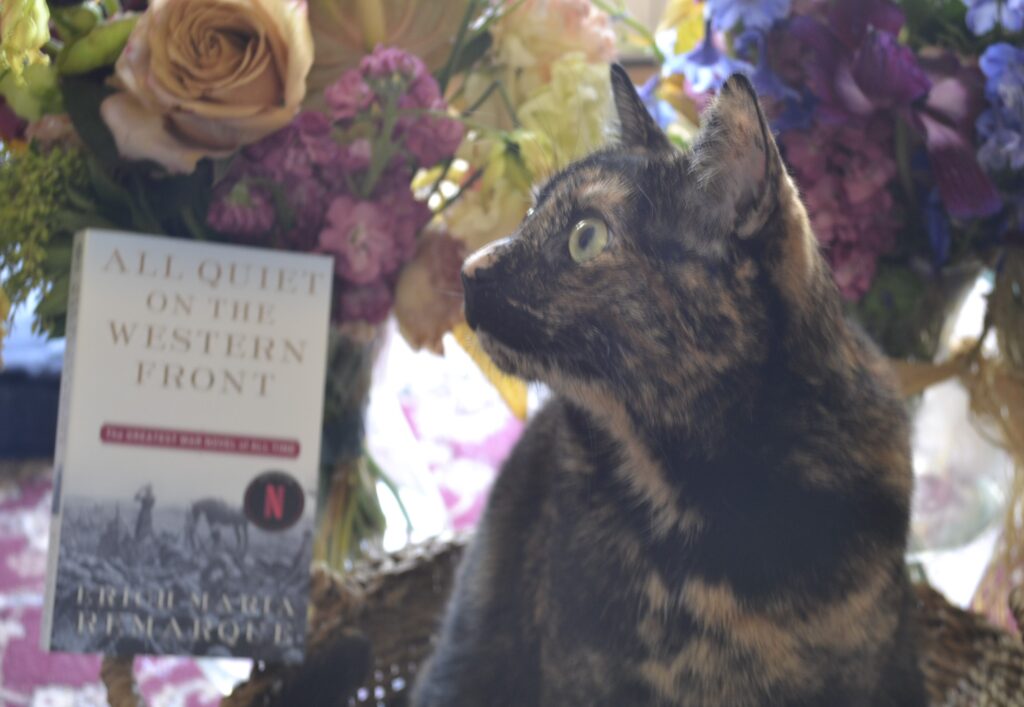
Pressing and Drying
My lovely spouse has been busy selecting certain flowers to press into bookmarks, and other ones to preserve through drying for a winter bouquet. She’s always so creative and always tries to get the most out of every moment. I’m sure I’ll enjoy the bookmarks, and I know that I’ll be looking at those dried flowers fondly for years to come.
As long as Jabberwocky doesn’t somehow lose enough weight to hurl herself up to the cabinet top and decide to refresh her bullying tactics.
